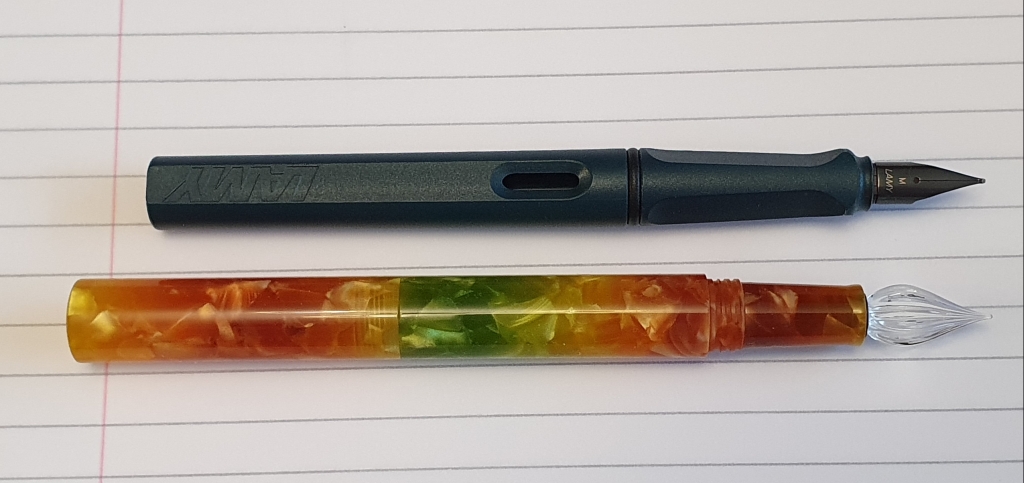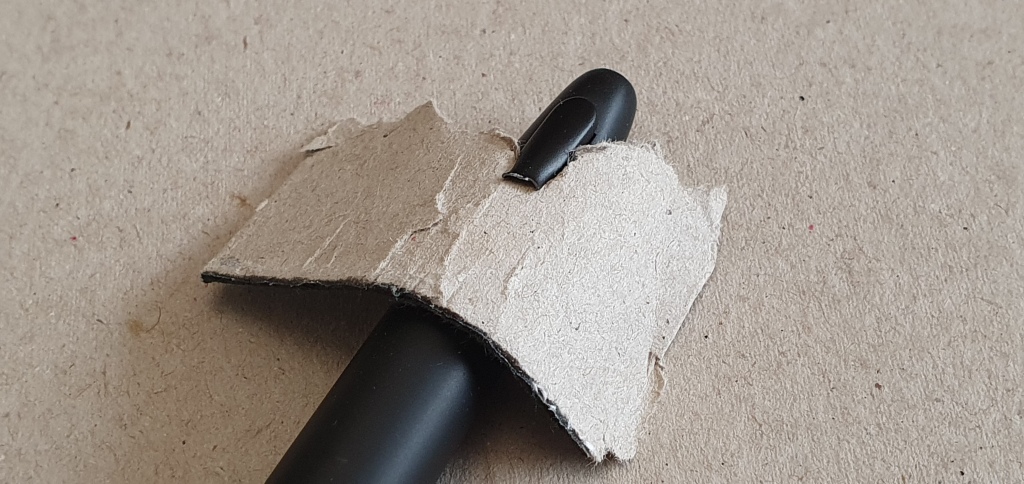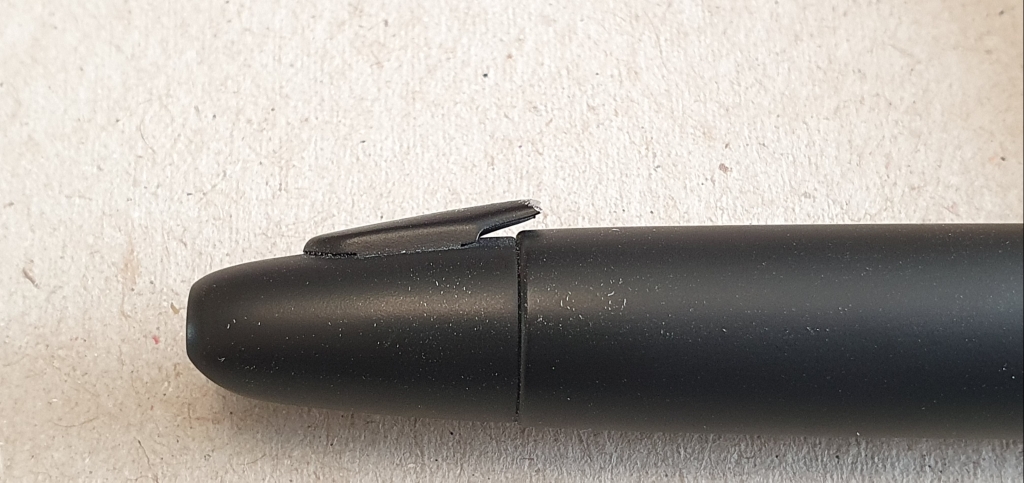One risk you take in the fountain pen hobby, is splashing out a large sum of money only to find that it is a disappointment and poor value. On the other hand, occasionally you can buy an inexpensive pen and be genuinely delighted with it exceeding your expectations.
Fortunately this is the case with my newest arrival, a Moonman glass nib pen. This story began when I read a review of the Moonman n6 by Anne on her blog Weirdoforest Pens, a few weeks ago. I was thrilled at the potential of a glass nib housed in a conventional fountain pen body, with a cap, that could be easily transported. I promptly set about finding and ordering one from ebay.
I thought that what I ordered was the same model as Anne’s pen, but evidently I had not paid close enough attention. If hers is the n6, then mine must be something else! Anyway, I will show you what I bought:-

When ordering the pen, there was a choice of four colours: the names of the colours differ somewhat depending where you order but the choices were Black Ice Flowers, Red Ice Flowers (both of which looked like Koi fish colours), New Rose (the pink version like the colour of the pen in Anne’s review) or the one I chose, called Aurora or Autumn Leaf or Gradient Green. I have since learned that the same acrylic can be found on some Pen BBS models too. It is gorgeous blend of colours and in one of the marketing photos, the pen can be can be seen against an avenue of trees in their autumn colours.
Secondly, apart from chosing your colour, you also have the option to chose a steel nib unit too. There were a few choices but I opted for the “bent nib” or what I would call a fude nib, as something a bit different. Whilst the glass nib has to be dipped in ink, it can easily be unscrewed from the section and replaced with a steel nib, and inked by a cartridge or converter or (although I have not tried), as an eyedropper.
When my pen arrived, it came in a box marked Delike. The glass nib was fitted in the pen, but there was a separate little cellophane sleeve containing my fude nib and a simple converter, with a sliding plunger and a coiled spring ink agitator inside.
It was not until revisiting Anne’s review, that I realised that our pens were not quite the same. Her n6 was 125mm long, or under 120mm uncapped and not postable.
My pen, on the other hand was just 102mm long when capped, a tiny 95mm when uncapped but a super generous 140mm long when posted. As can be seen in my photo, there are screw threads at the end of the barrel, to screw the cap onto the back, where is sits flush with the barrel:

I was excited to try the glass nib. I dipped it in a nearby bottle of Waterman Serenity blue and tried it on a pad of file paper. For a glass nib pen, the result was very pleasing! It wrote with a fine line and a bit of audible feedback but not scratchiness. The ink flowed evenly and I found that I was able to get a good ten lines of A4 paper on one dip!
I tried a few other inks. That is the beauty of a glass nib pen: you just dip it in water, swish it around a bit and then dry it on a tissue and you are ready to dip again! It is great for sampling a few different inks.
I found that some inks worked better than others with the dip nib. I think it depends on the viscosity and how well the ink sits in the channels in the nib but it is fun to try a few different inks and see how it goes.
When I looked at the steel nib, my first thought was that they had made a mistake or else run out of bent nibs and had given me a standard fine nib instead. However, on closer inspection, I saw that it was I who was mistaken and that the nib was indeed bent.

I was a little wary of unscrewing the glass nib as I did not want to snap the lovely bulbous nib off. However, it came out quite easily.

Here is a little writing sample, my first jottings with the glass nib:-

I also had a quick dip with the bent nib but have not yet inked it with the converter. Once it started, it was pleasant to use just writing normally as the bent tip gives narrow down strokes and broad cross strokes, like an architect grind. I will experiment some more with this shortly when I am done with testing the glass nib.

I am very excited at the possibilities of the cap-able glass dip nib. It is great to be able to sample lots of inks with minimal fuss, without having to ink up a pen and then wash it out thoroughly. Secondly, this one is so easily transportable, unlike my previous all-glass dip pen which is rather delicate and lives in its cardboard box and is anchored inside with elastic loops at both ends.
This pen is about the same size when capped, as a Kaweco Sport and as such, it fits nicely into a Kaweco Sport sleeve. Once our pen club re-convenes, I shall make a nuisance of myself dipping into inks that I have not tried before. A dip nib gives you the option to sample an ink, write for a few lines, or a few pages and then carry on or else try a different ink: no big decisions on whether to ink up a pen and to have to get through 20 or more pages before you can have a change.
Also, it is great for trying a little bit of mixing, without any fears of the inks being incompatible and gumming up your feed. Or you can re-discover inks that had been put aside due to causing nib creep: I can think of an orange ink and a yellow-green that I enjoy but do not use, because of that.
Finally a size comparison of the posted pen against the ubiquitous Safari:-

As you can see, the Moonman is a good comfortable length yet not heavy and the section is a good size for comfort while not too big for some ink bottles. I am a happy customer.










